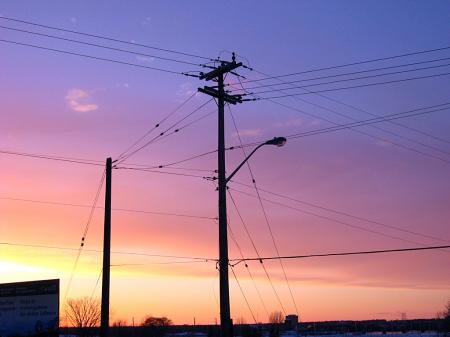In many ways, Lady Chatterley’s Lover reminds me of Anna Karenina. Each uses a relatively straightforward narrative as a means of conveying philosophical positions about the changing nature of the world – often through nakedly analytic passages. Chatterley seems largely concerned with the question of how to endure in an unnatural world: how to persist in humanity despite the challenges brought by capitalism, industry, and global interconnections. The major conclusion seems to be that the best one can hope to do is opt out, rejecting societal expectations and returning to some kind of natural intimacy with a fellow refugee.
At the heart of the book are contrasts between situations and personalities: between coal mines, the literary world, high society, and a simple pastoralism. Also, between Constance’s crippled husband and her intentionally unsophisticated lover; between Constance herself and her sister; between Constance and Mellors’ relationship and that between her husband Clifford and his nurse and confidant. By setting these things against each other, Lawrence gains both an opportunity to share insight and a platform from which to issue condemnation. Usually, the crime a person or situation stands accused of is being compromised in nature and inauthentic. Constance’s return to authenticity is thus a triumph, even if it does little to alter any of the societal forces that led her initially to a hollowed-out life.
The book also has a certain ecological concern, though more in the spirit of a lamentation for the passing of pastoral life than in the form of an argument for social reform and improved behaviours and conditions. The coal mines are condemned – and the kind of lives that the miners have built around them – but the situation is treated as one almost fated. Similarly on the issue of class separation, some negative aspects are identified, but the book never really rallies for reform. It is all about individual resurrection despite society, not any hope that society might change so as to better foster and accommodate authentic individuals. Connie chooses to withdraw from her place in society, though never considers sacrificing the automatic income that makes her an aristocrat to start with: an income as tied to the stratification and industrialization of society as Clifford’s coal wealth.
No short review can cover all the insightful flourishes that pepper the book, arising, as they do, from a slightly odd omniscient point of view that happily flits through characters both major and minor. The books is intriguing, convincing, and clearly written. To a greater degree than I would have expected, it also speaks directly to some of the major tensions in the modern world. Though a venerable classic of literature, it is in no sense dated.


This post is part of the reading project I am doing with Emily.
The thing that I found most valuable in the book was that it is located in a time and place that makes the book serve as a kind of grave-marker for the death of our Western cultural connection with nature, and the triumph of the industrial mind-set.
It should really be a supplement to any history course on the industrial revolution, I think. Just as The Love Song of J. Alfred Prufrock by Eliot should accompany anyone who is learning about Modernism.